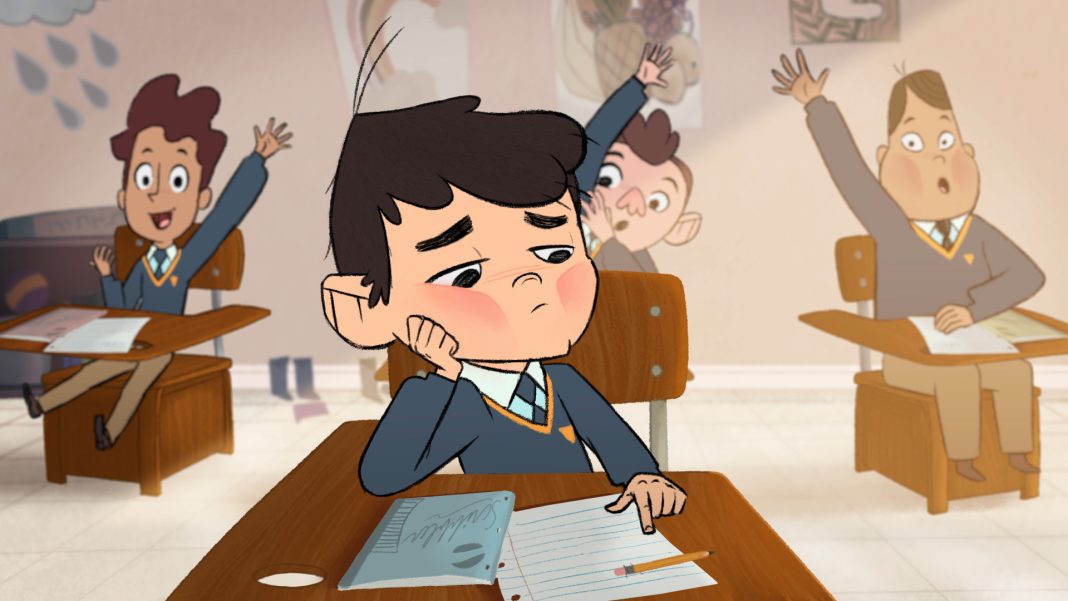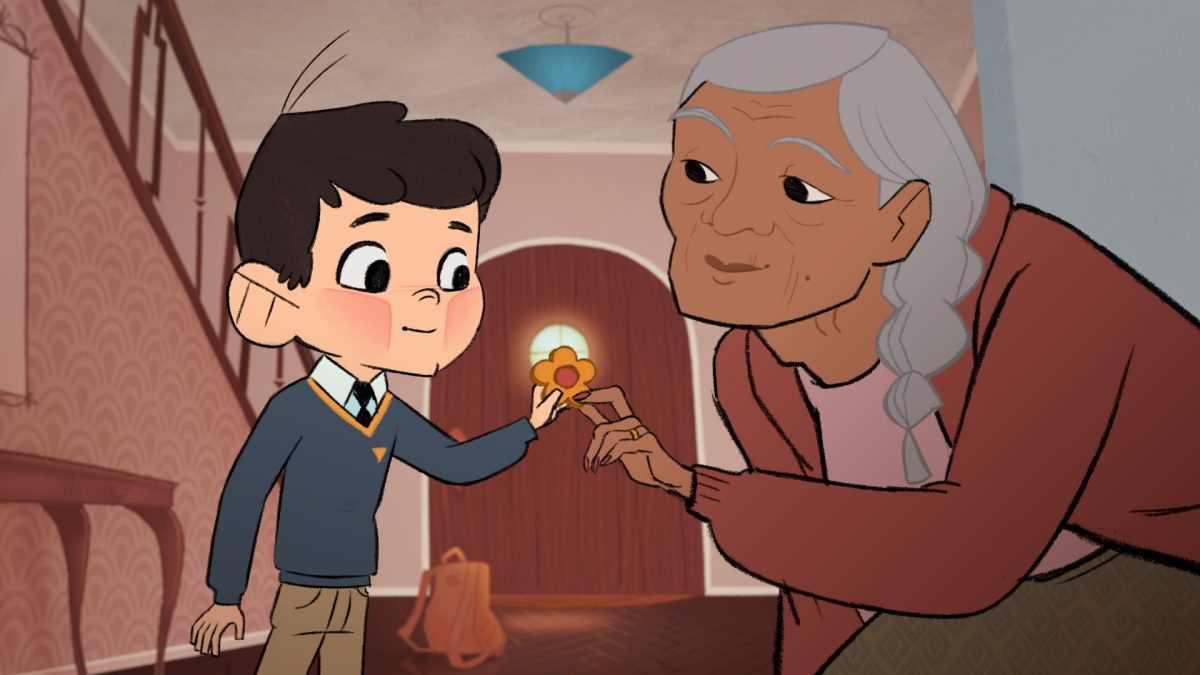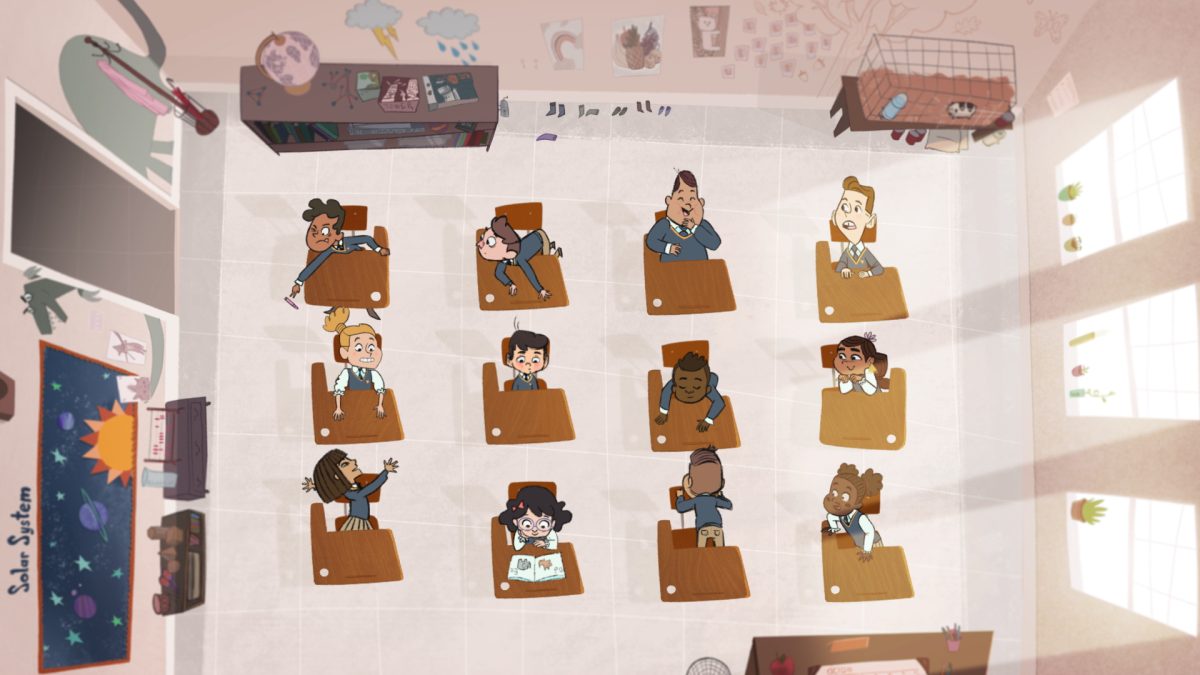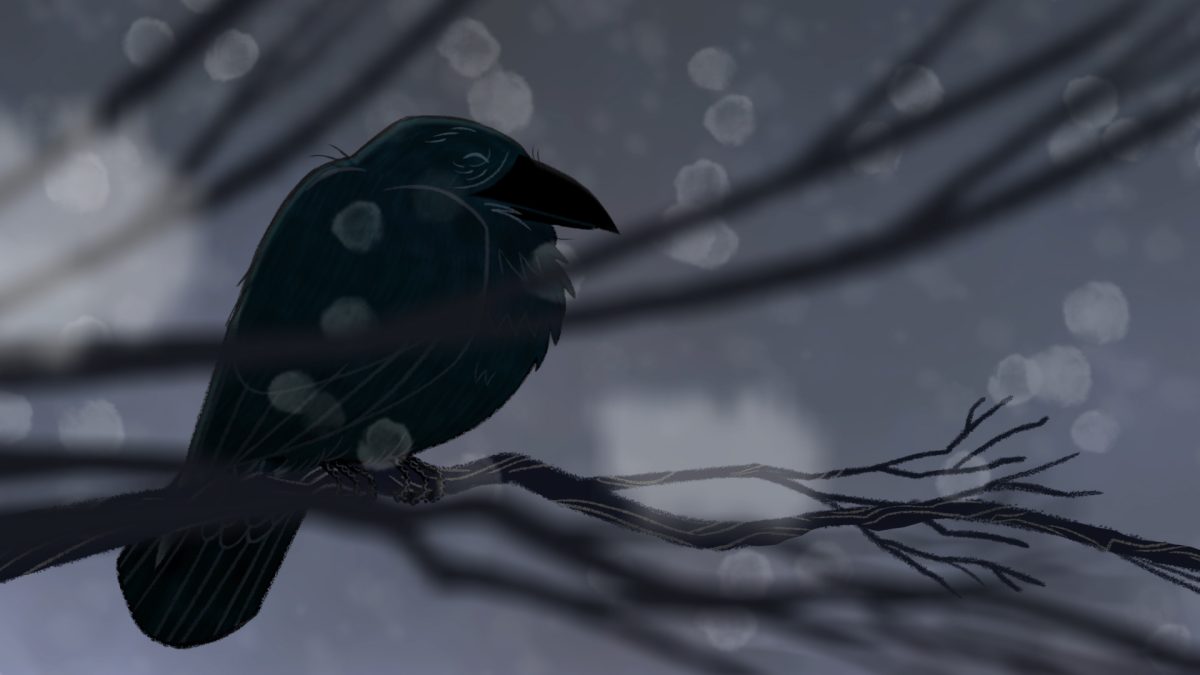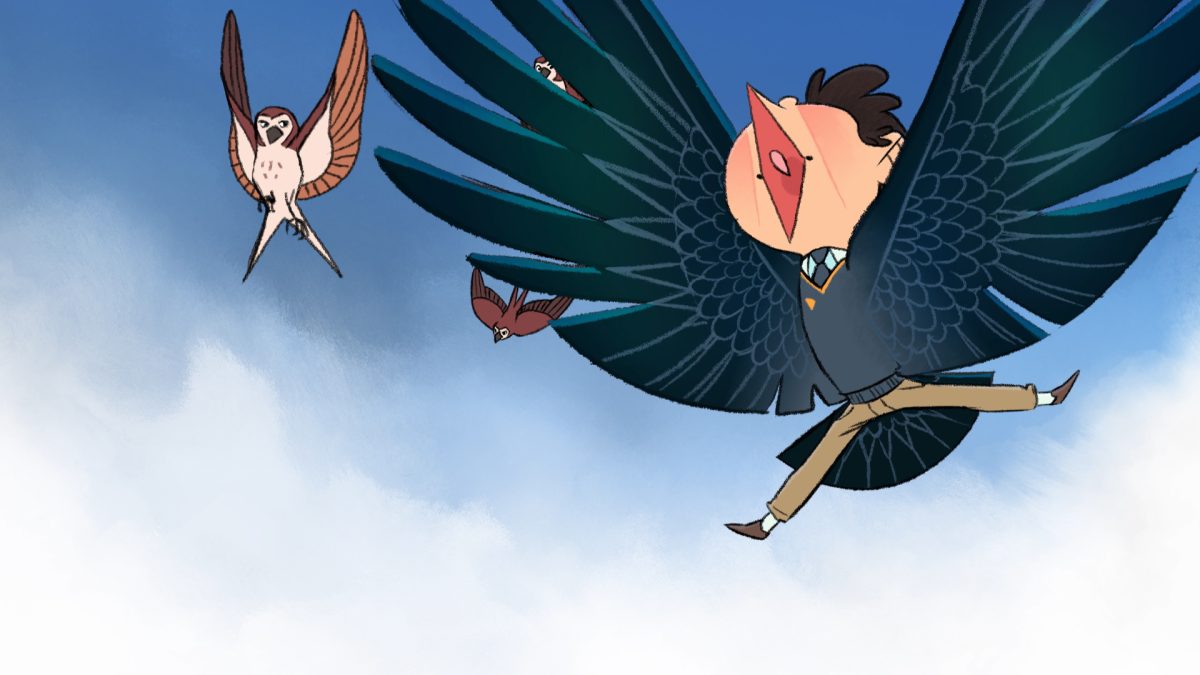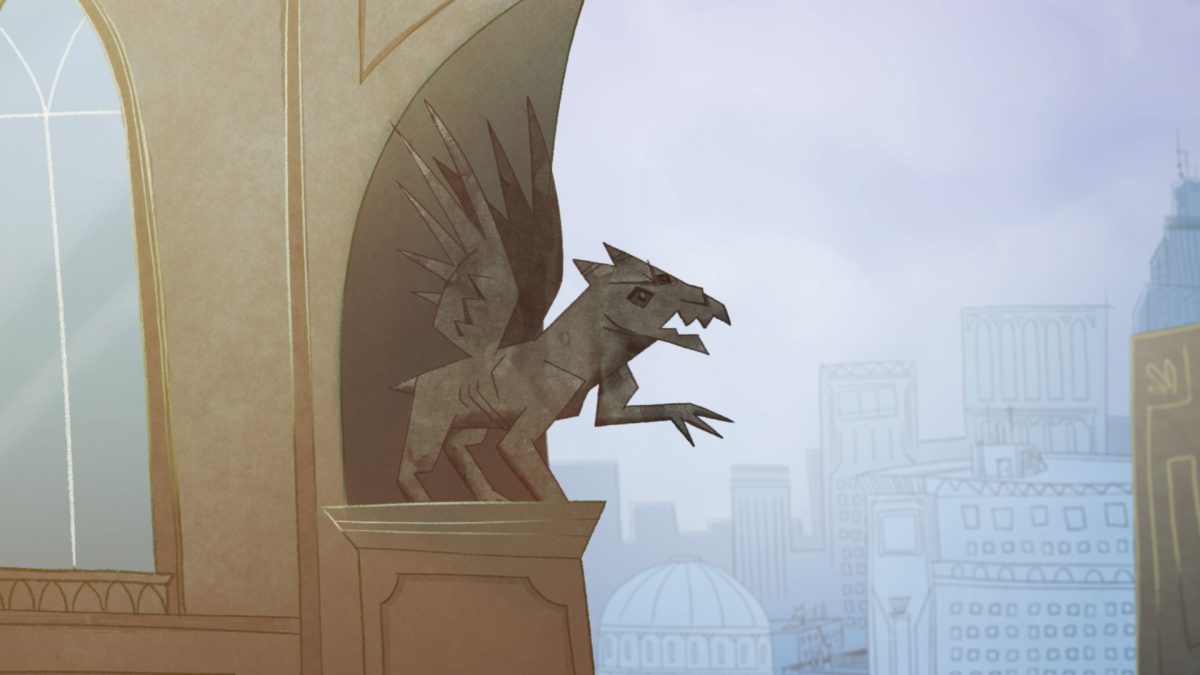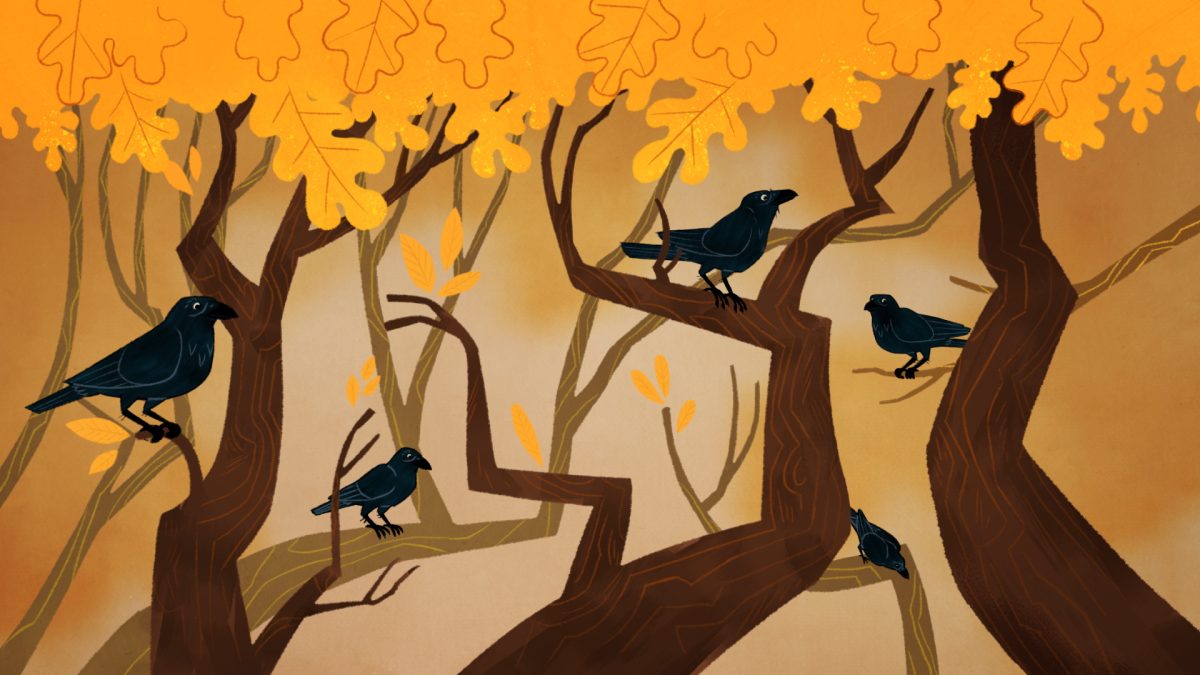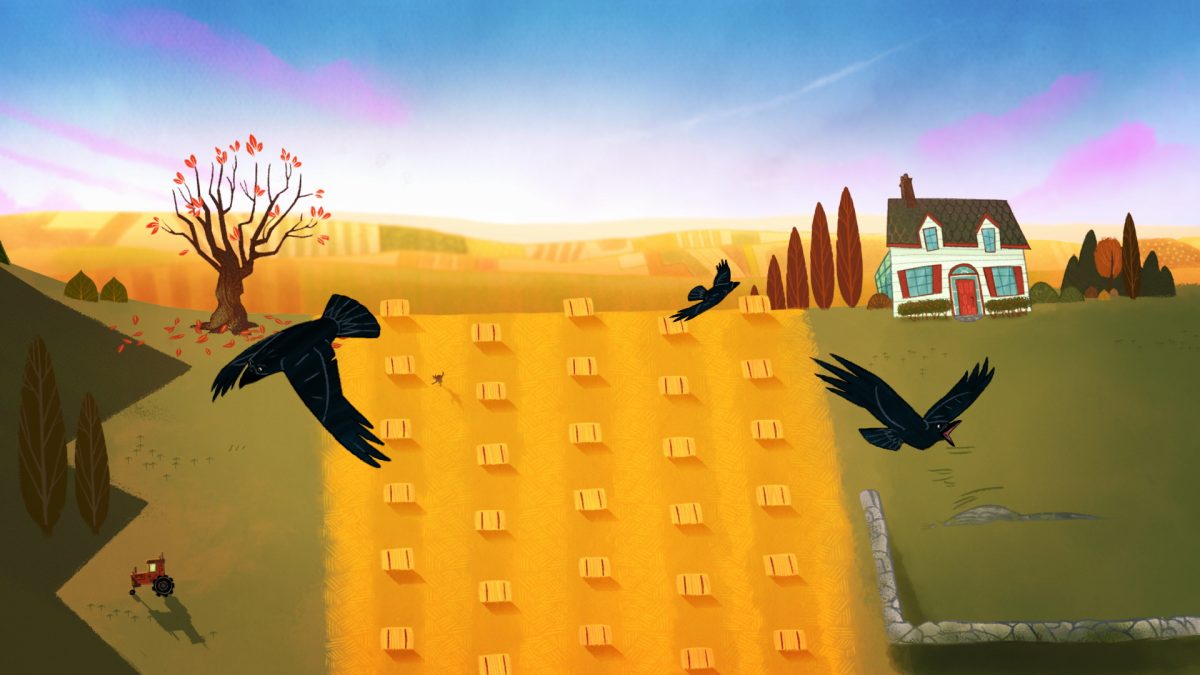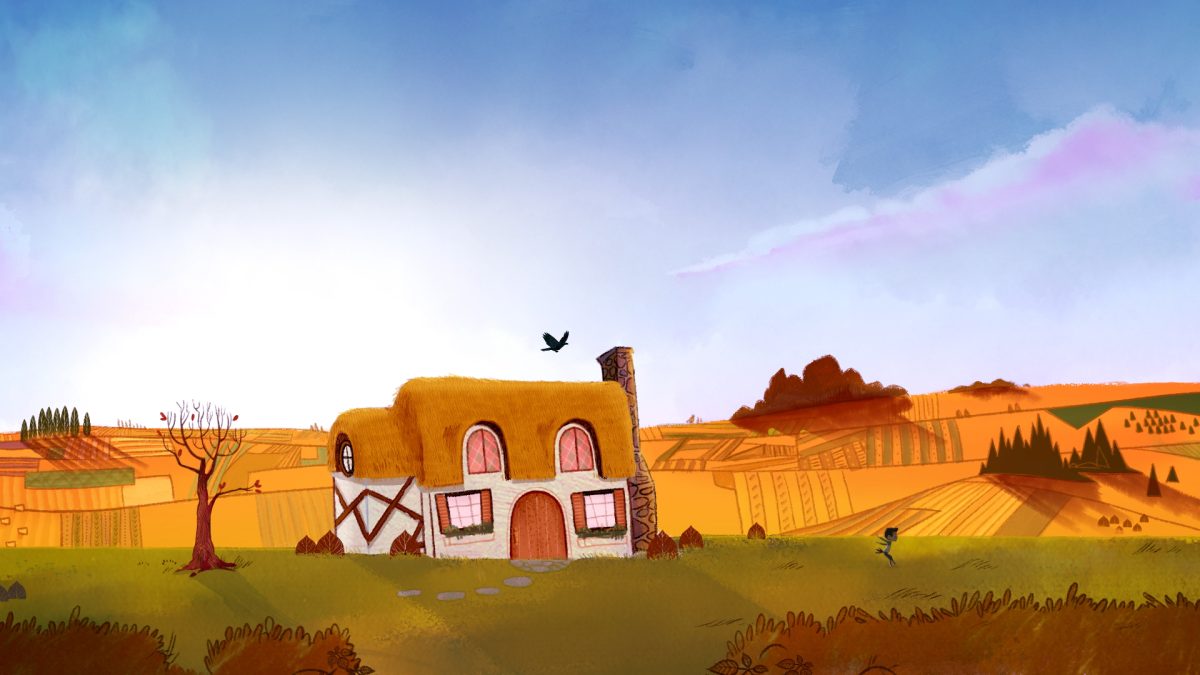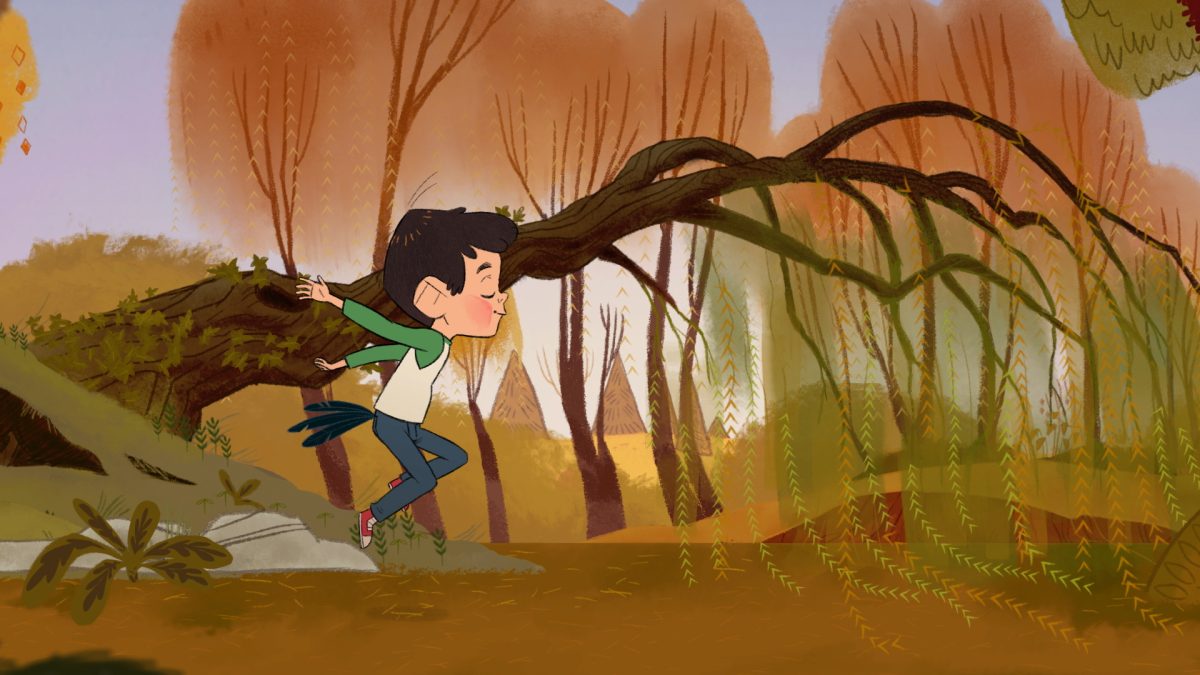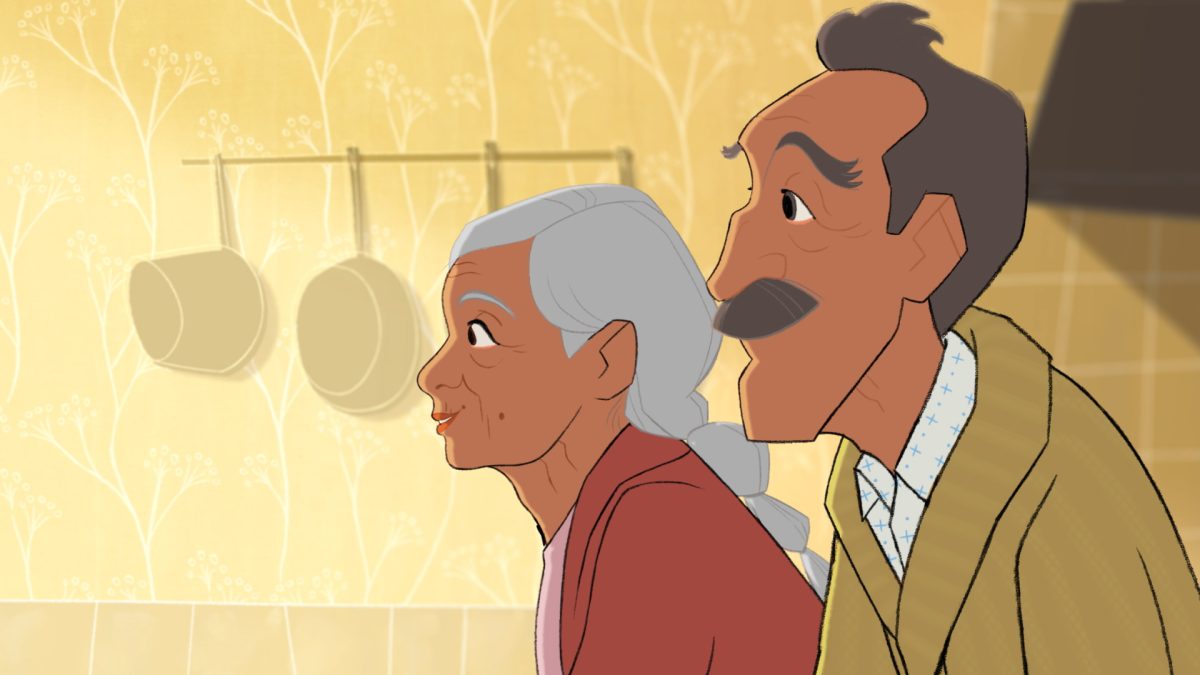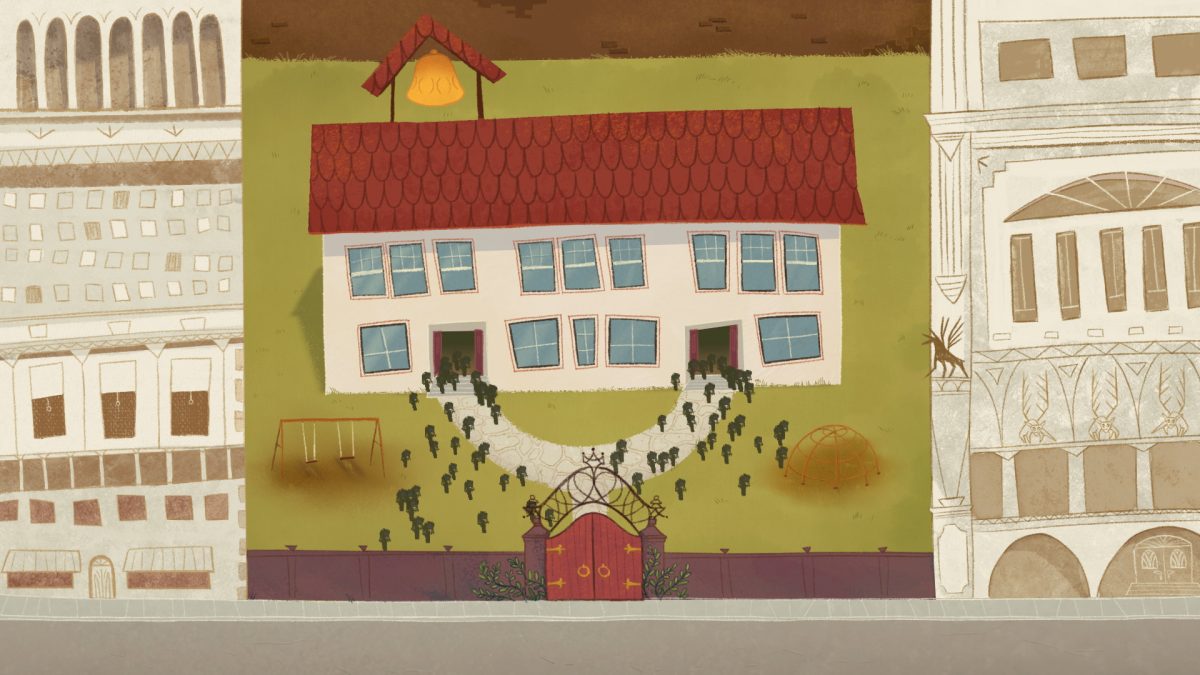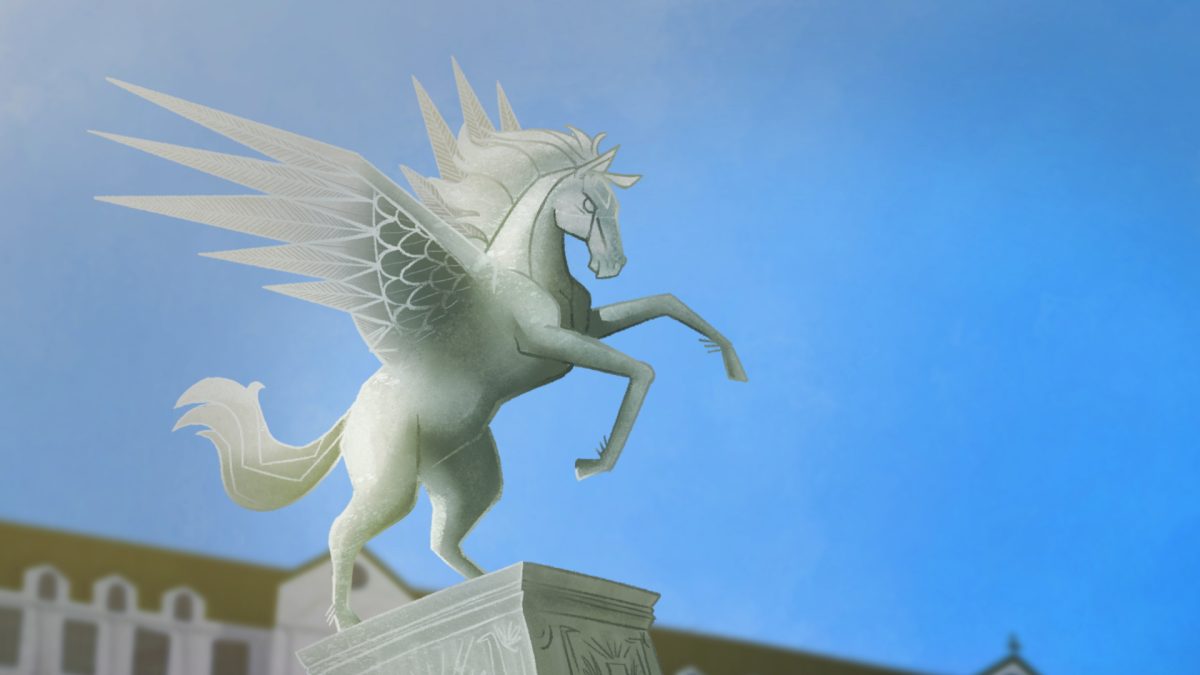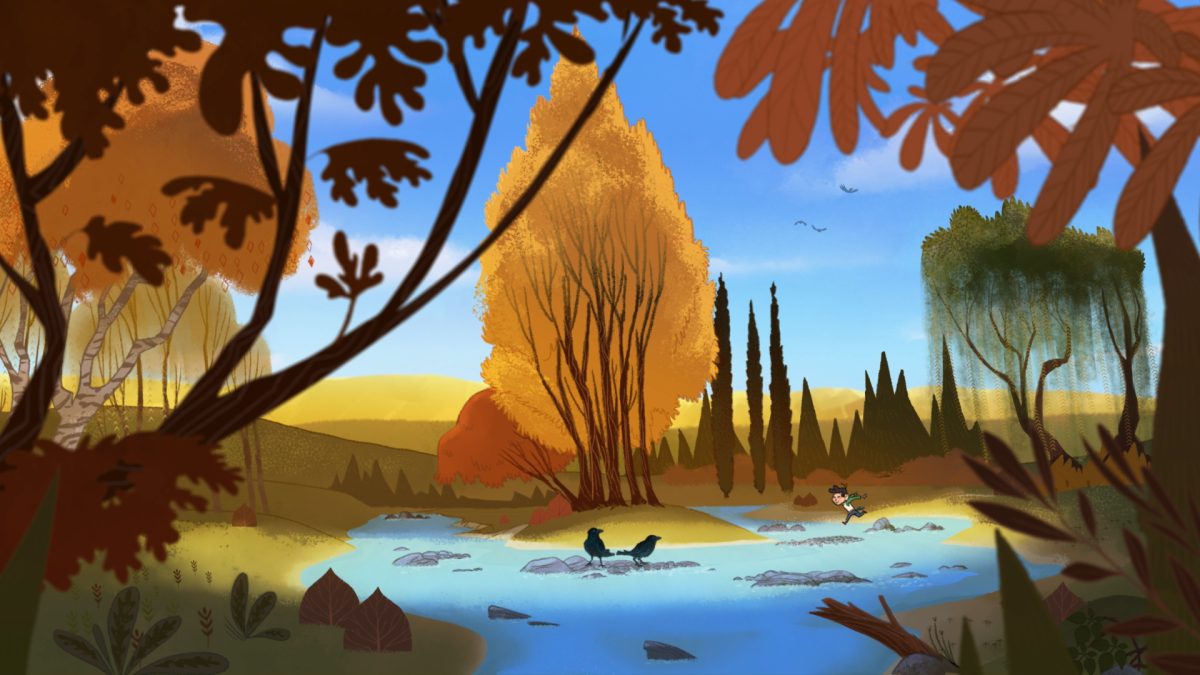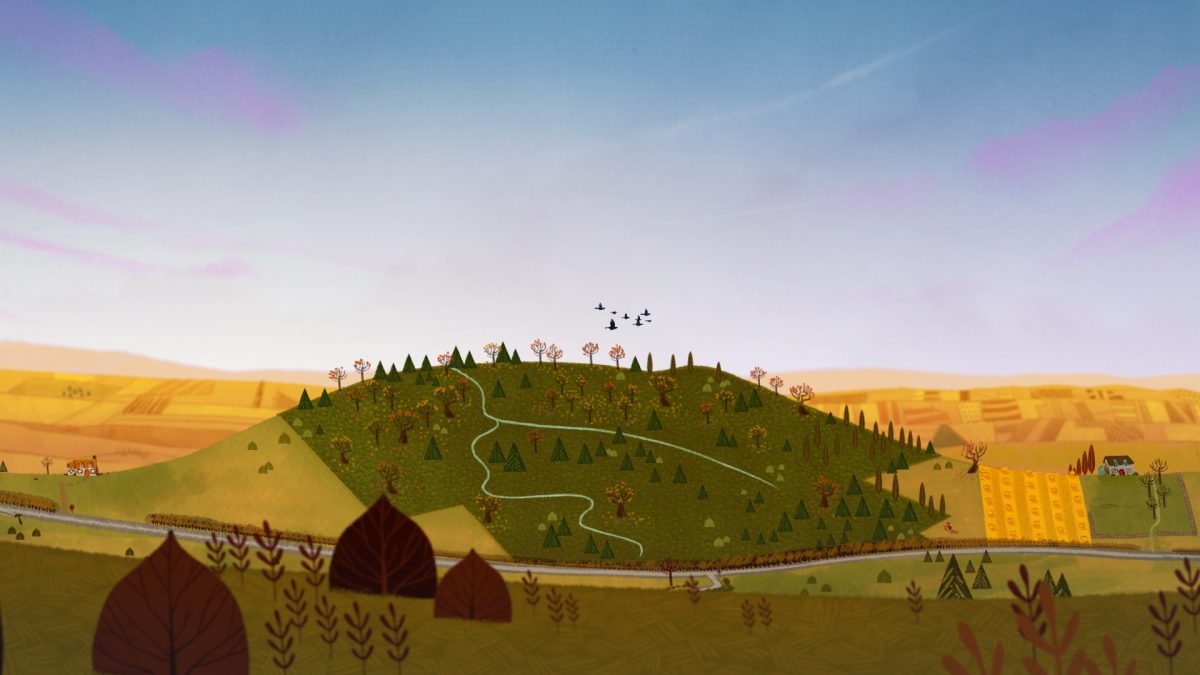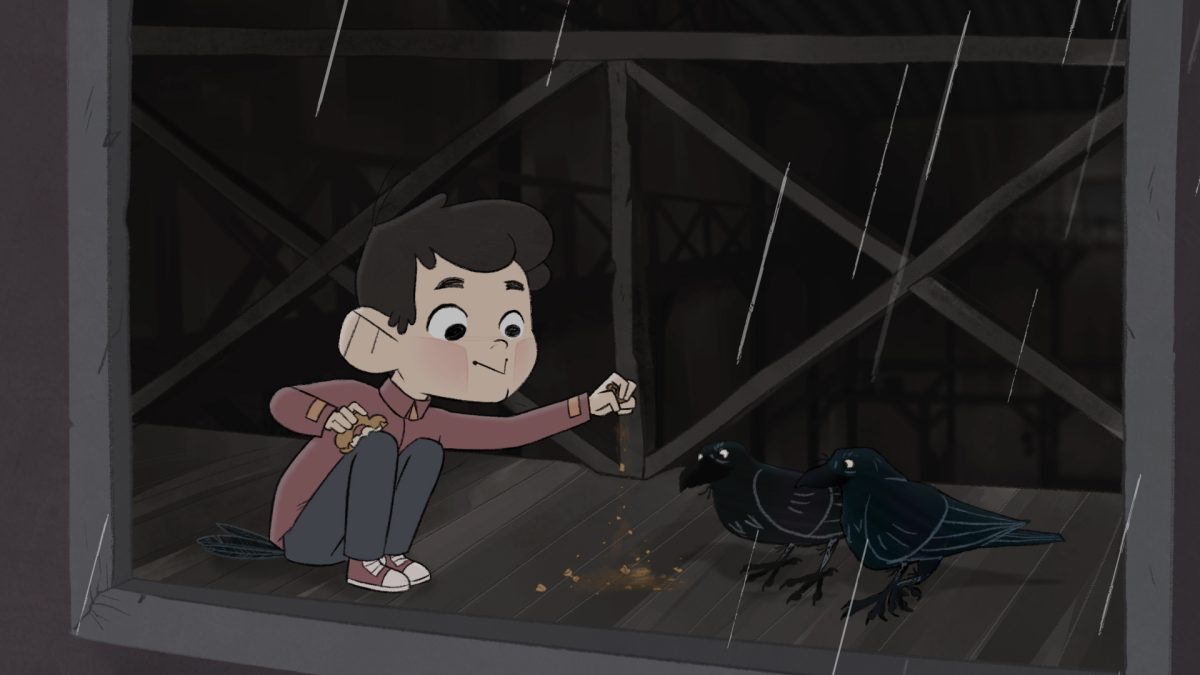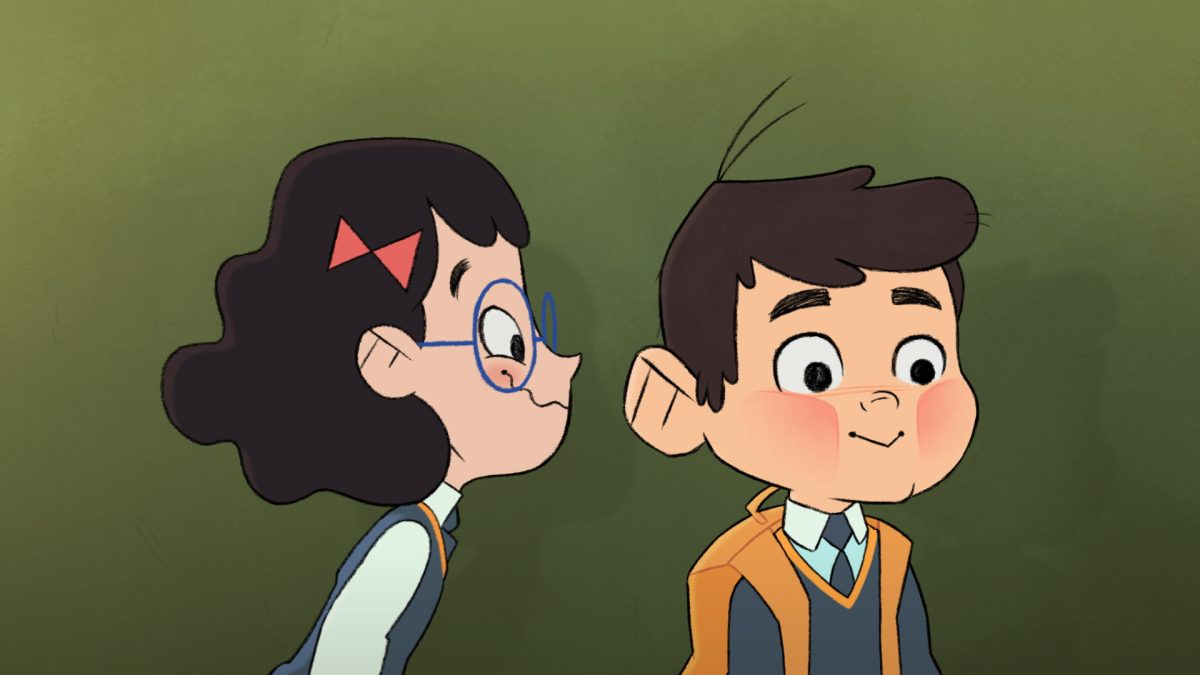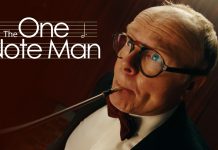Sean McCarron’s new short film CORVINE focuses on a young boy’s obsession with crows.
Film And TV Now spoke with the film-maker about the short.
The film taps into the themes of misfit child explored in the likes of KES and BILLY ELLIOT. What was the start off point for the animation?
Inspiration is a mysterious thing – it’s hard to say now what exactly inspired the story. There were a few different things that kind of came together: I really wanted to tell the story of someone who didn’t fit in and felt like an outsider.
I came across the word ‘Corvine’ (which means ‘crow-like’) when I was doing a crossword, and I started noodling around with some sketches of a little boy I called Kevin who likes to pretend that he’s a crow. He really started to become his own person at that point, and the story took off from there.
The animation in the film is unconventional. Who and what were your artistic and visual influences?
I was working at Cartoon Saloon when I started Corvine, and I was definitely influenced by the Saloon aesthetic.
I wanted Corvine to feel like a story book – the kind of book that belongs on the shelf in Kevin’s bedroom, alongside his Elephant & Piggy (Mo Willems) books!
I grew up reading Little Golden Books…The natural world is Kevin’s sanctuary, and it was important to make all of the outdoor scenes feel as full and lush as possible in order to reflect Kevin’s joy and ease.
How long did it take to make?
Eight years! For the first six and a half years, I was working on it in my free time, balancing it with my day job. I eventually got some funding from Canada Council for the Arts, which was a huge boost – both financially and emotionally!
Tell us about the music score and your collaboration with the composer?
Ah, how much time do you have?! I could talk about the music for hours. I knew all along that the music was going to be really key to the success of the story, because there’s no dialogue in the film.
All of the emotion I wanted to convey to the audience relied on the character acting and on the score, and that was kind of scary as a first-time filmmaker with no experience in sound or music.
Once the CCA funding came through, we reached out to Core Music Agency, and they guided us through the whole process. They were really great to work with, and when we said we wanted a big, classical sound, they put us in touch with Suad Bushnaq.
Suad was an absolute dream to work with, from our first call to the final mix. She immediately understood the story, she related to the main character (who, funnily enough, looks a lot like her son!), and she brought heaps of energy and passion to the project.
I teared up when I heard her first pass at the score. In terms of collaboration, it was really that simple – I wrote the story, and she wrote the music, and I trusted her completely.
You have twenty years of animation and storyboard experience. What was the moment that made you want to create your own work rather than be a hired hand in film and television?
There’s a big difference between working for someone else and working on your own project.
For years, I’d work all day – and then go home, and doodle all evening to wind down! I’ve always loved the freedom of drawing just for myself, and making my own short film was really just another way to do this.
I had been animating and boarding for a long time, and everyone I worked with knew me as an animator or a board artist; Corvine gave me the opportunity to be a writer, and a character designer, and a background artist. It was an enjoyable challenge and, to tie it back to the film, a chance to spread my wings as an artist.
Following on from that, who have been key influences and mentors in your creative journey which has led to to CORVINE?
I’m lucky to have a few wonderful, talented friends in the industry who believed in Corvine, gave me some feedback on the early draft of the animatic, and encouraged me to keep going with it over the years. This includes some great people I had the privilege of working with at Cartoon Saloon.
The interesting thing about the creative journey is that you don’t really notice it happening – you spend years in the industry, and every project you work on probably rubs off on you in some way, and your creative output is kind of the sum of every experience you’ve ever had.
The practical journey, on the other hand – the actual nuts and bolts of getting funding, preparing a budget, hiring a crew, paying invoices, preparing a DCP, and submitting the film to festivals – that’s a journey that took a lot of conscious effort and learning at every step along the way.
Would you like to expand on the issues and themes explored in this short into a feature idea?
Some of the themes in Corvine will probably follow me to my next project – they’re just part of who I am and how I see the world. I’m not concentrating on a feature yet.
I really like short form storytelling and is a great way to learn! Small projects allow you to be hands on in a lot of different departments during production you don’t get that chance as much on larger projects.
I would like to tackle a feature at some point but I’d like to have another go at a smaller project and implement what I have learned from making Corvine.
Who and what are your key cinematic influences?
Walt Disney animated films would be the big one, I grew up with those films and I learned so much from them over the years.
Specifically, the films directed by John Musker and Ron Clements, The Little Mermaid, Aladdin, and Hercules are still some films I go back to often to rewatch. I love their sense of fun and warmth, the characters are always so memorable.
Chuck Jones would be another, he has this amazing ability to sell a joke or emotion through a single expressive drawing. He was a master at those character moments.
I also love how much music plays such a large part in so many of his short films. You can just tell he was a lover the Arts and it influenced his work so much.
The films of Billy Wilder are also a massive inspiration to me. His writing is so witty, sharp and engaging his characters stay with you a long time after the film ends. I really admire that ability.
You started your own production company which is based in Vancouver. What are your immediate and long-terms plans for the organisation?
The immediate plan is to continue screening Corvine on the festival circuit, likely until the end of the year, and to enjoy the experience as much as possible!
I’m working on some new ideas for short films with the goal of beginning development on the next one in 2024. I’m hoping to get the next one done in a lot less than eight years!
Your short played at Tribeca and other festivals. How do these events help film-makers like yourself and what was your experience at Tribeca like?
Tribeca was an amazing experience. It’s such a prestigious festival, and the animation line-up was really impressive. It was such an honour to have Corvine selected by Whoopi Goldberg, and to share a stage with so many talented filmmakers.
In terms of how these events help filmmakers, the biggest thing is that they actually get your film in front of an audience. Festivals provide you with an opportunity to watch other people watching your film, which is a joy!
And of course, they also allow you to meet, learn from, and celebrate other filmmakers. The very idea of networking makes me cringe – I’m a total introvert – but all of the festivals I’ve attended with Corvine have done a great job of getting people together and creating a shared experience.
Finally, what are you most proud of about this short?
I’m most proud that I got it finished – and that I still like it! People laugh when I say that, but it’s true.
As an artist, you so often go back to your work and immediately see the things that could be improved, or the things you wish you did differently. But I’m really happy with the way Corvine turned out, and it makes me very proud every time I get to see it on a big screen at a festival.
Please follow and like us:


